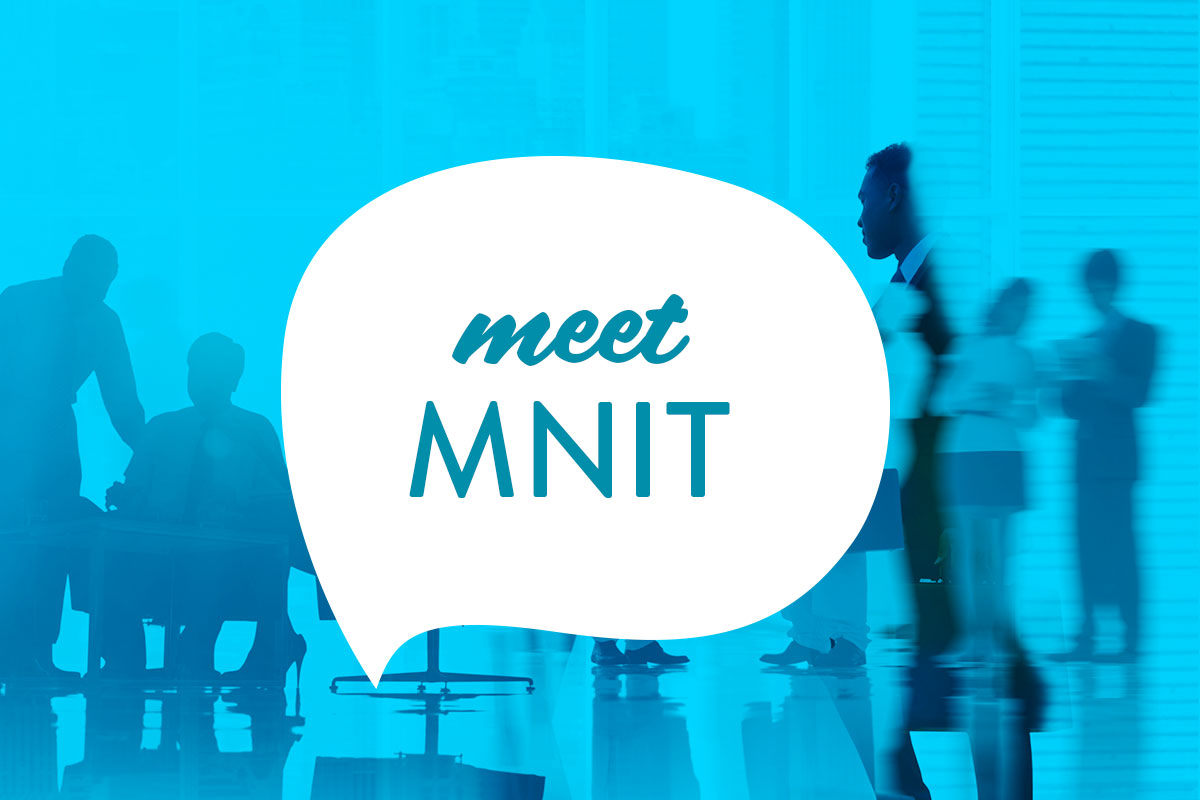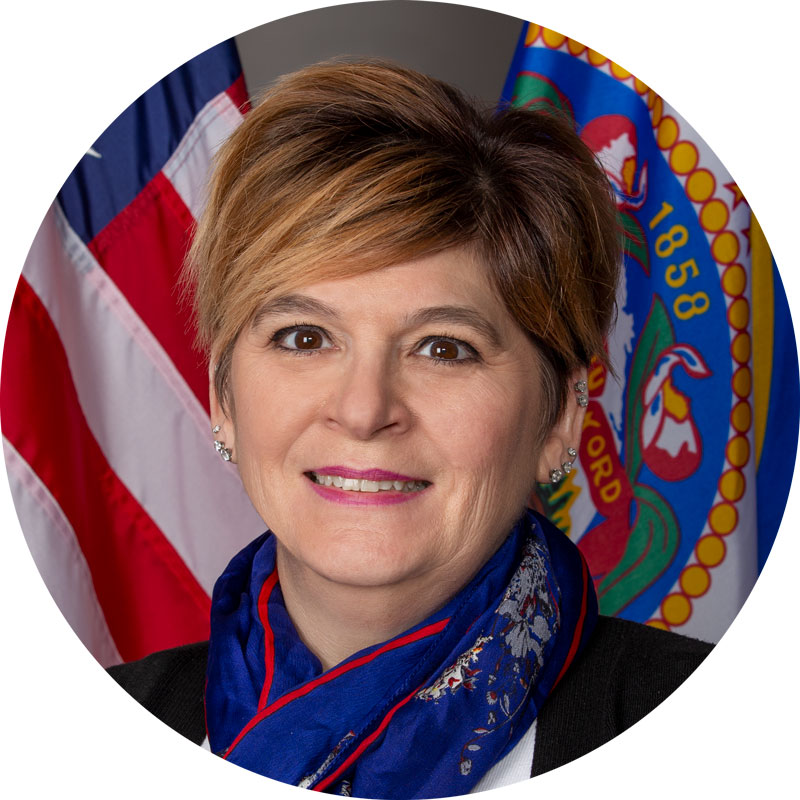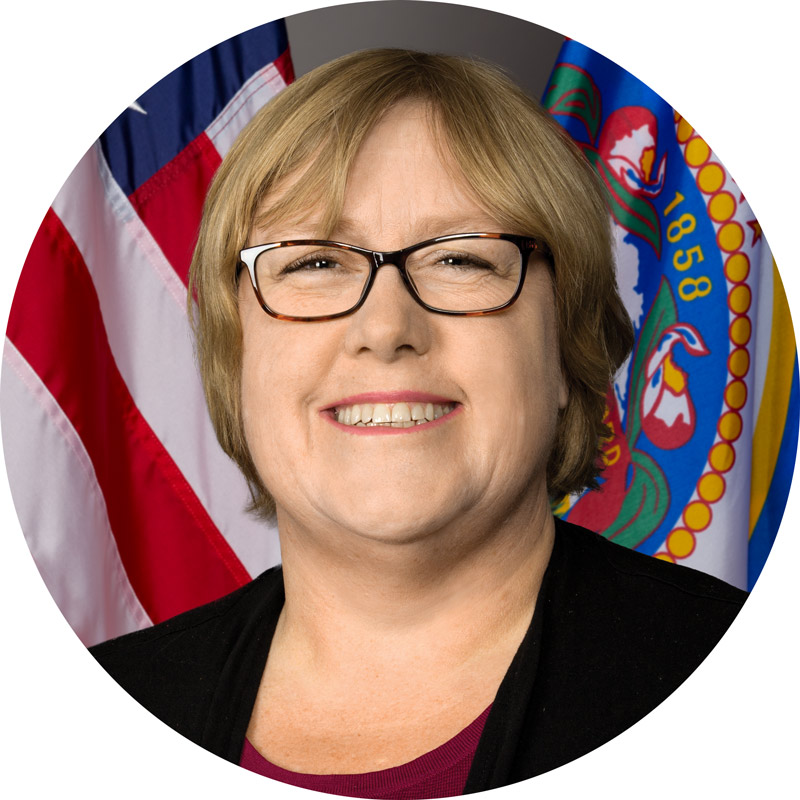Learn more about these new leaders and how their work impacts Minnesotans.
7/6/2022 9:41:45 AM

This spring, Minnesota IT Services (MNIT) welcomed two leaders who will help MNIT support the creation of an innovative digital government that works for everyone: Kimberly Maturo-Hilt and Alison Slaats.
Maturo-Hilt is the Chief Business Technology Officer (CBTO) for MNIT partnering with the Minnesota Department of Veterans Affairs (MDVA). Alison Slaats is Minnesota's Chief Geospatial Information Officer (GIO) and Director of the Geospatial Information Office (MnGeo).
Learn more about these new leaders and how their work impacts Minnesotans. Responses have been edited for length and clarity.

Kimberly Maturo-Hilt came to MNIT from the Minnesota Lottery, where she served as the Chief Information Officer. Her team oversaw web development, IT services, networking, and information security. Before her role at the Minnesota Lottery, she spent numerous years in the private sector working in industries such as pharmaceuticals, high tech, industrial recycling, third-party logistics, and agriculture. Maturo-Hilt excels at delivering creative, scalable IT strategies that meet or exceed business needs by employing a unique technology-management and team-building approach.
Maturo-Hilt: I am focused on supporting how we connect MDVA to veterans and their families with benefits they so deservedly earned. I think technology is an important conduit for making those connections and I want to continue to explore how to keep current connections and make even more. Minnesota has 300,000 veterans and it should be our goal to connect with each and every one of them, or their family members.
Maturo-Hilt: One of the most impactful efforts that we embarked upon at the Lottery, as so many agencies might have experienced over the past couple of years, is transforming into a remote work environment. The team and agency essentially transformed overnight, and it was amazing to see how teams can come together to make the impossible possible.
The most interesting though has to be the upcoming launch of a new IT service platform. Change brings about creativity and collaboration, even amongst difficult conversations. In the end what you see is process maturity, standardization, and elevated services to the whole of the Lottery. I am excited about what the IT service team will do in the future because their journey is just starting. They now have a tool that can grow with them and other areas of the Lottery’s business.
Maturo-Hilt: The team that I joined is amazing. They are all kind, humorous, dedicated, knowledgeable, and skilled. I truly would use the word “family” to describe them. In my short time with them, I have seen them handle a major incident with grace and supportiveness. MDVA is growing rapidly, and the team is right there to support the growth with additional solution development, process optimization, and program/project management. I learned that I am surrounded by an AMAZING technology team that is well regarded.
One of my mentors told me, “Always surround yourself with the best and brightest people.” Each day in my new role, I can hear his words echoing and I appreciate the importance of the sentiment.
Maturo-Hilt: When I was in college, I failed computer science three times and even then, I barely passed. Yet my first real job out of college was as an assistant accounting manager for a computer manufacturer. I discovered that I was good with accounting and loved finance but still didn’t know my life calling. A client of the computer company convinced me to join their company as a helpdesk technician. It was that choice that truly started my career. A year later, I joined a small company project implementing software on an international scale.
I found my passion – working with all the different business functions, learning what they did, how they did it, what challenges they faced, and leveraging software to bring change and improvement to their business areas. I bring a never-ending desire to continuously learn, a need to help others, an openness to the voice of others, and a patience and calmness to solving problems to the team at MNIT MDVA.

Alison Slaats has over 25 years of experience in the GIS field in Minnesota. She has worked in the public, private, nonprofit, and educational sectors including working for Esri, the Metropolitan Council, Envision Minnesota, and most recently for Minnesota IT Services. During her time at MNIT, Alison worked for MNIT partnering with the Minnesota Department of Agriculture and the Board of Animal Health, and more recently at MnGeo as a GIS Supervisor. In 2019, Alison was recognized with a Polaris Leadership Award for her contributions to the geospatial community in Minnesota. She received a BA from the University of Minnesota and an MS degree in Geography specializing in GIS from the University of South Carolina. Alison has been the Minnesota GIS/LIS Consortium Treasurer since 2019.
Slaats: There are many impactful technology projects that MnGeo helps support for our business partners. MnGeo supports a data validation toolset for NextGen 9-1-1 in partnership with the Minnesota Department of Public Safety Emergency Communication Networks (DPS-ECN). MnGeo creates and supports cultural resource tools to ensure that MnDOT (Minnesota Department of Transportation) can learn about potential cultural resources in their project areas. We support data processing tools for traffic crash data and analysis tools for the MnDOT Office of Traffic Engineering that inform their decision about where to improve roads to reduce crashes. We are also supporting the COVID vaccine finder tool. Wherever spatial data and tools are needed, GIS technology can help.
Slaats: We have three main areas that we focus on at MnGeo: to lead coordination and communication in the geospatial community, to improve access to statewide foundational data sets, and to provide technical support to state agencies.
One of my top priorities is to strengthen our relationship with county partners. They’re the ones maintaining geospatial data every day, and our partnerships are critical for coordinating foundational data sets at a statewide level. We want to make sure that we understand the needs of counties and improve how we work together. For example, one thing we collect is parcel data. We compile it from counties quarterly and put it into a standard format. One reason we do this is to reduce the burden on counties by asking once for the data, and then MnGeo distributes the dataset to state agencies. We also make a public version of the standardized parcel dataset for counties that opt-in and share it on the Geospatial Commons.
Several agencies have partnering MNIT staff that support their GIS units and do incredible work. I look forward to understanding how MnGeo can better support their GIS teams and their work.
Slaats: I’ve been part of the GIS community in Minnesota for 25 years – the private sector, public sector, nonprofit, and even did a little teaching. I’ve worked for MNIT for the past 10 years, five of which I worked at MnGeo as a supervisor and the portfolio manager. The reason I joined this field is that GIS helps empower business experts and decision-makers to make data-driven decisions about their work. MnGeo is the team that can facilitate and provide the structure and the processes for statewide foundational datasets and support the geospatial community in Minnesota.
I’m super excited about this role because we have a great team at MnGeo and together we can accomplish great work!
GIS Technology
Careers
Geospatial
Careers
Veterans
Leadership
GIS
Geospatial